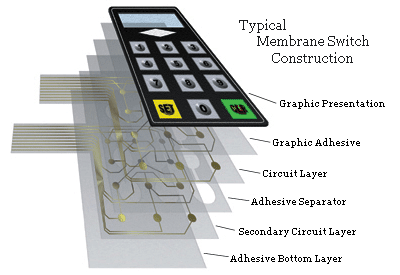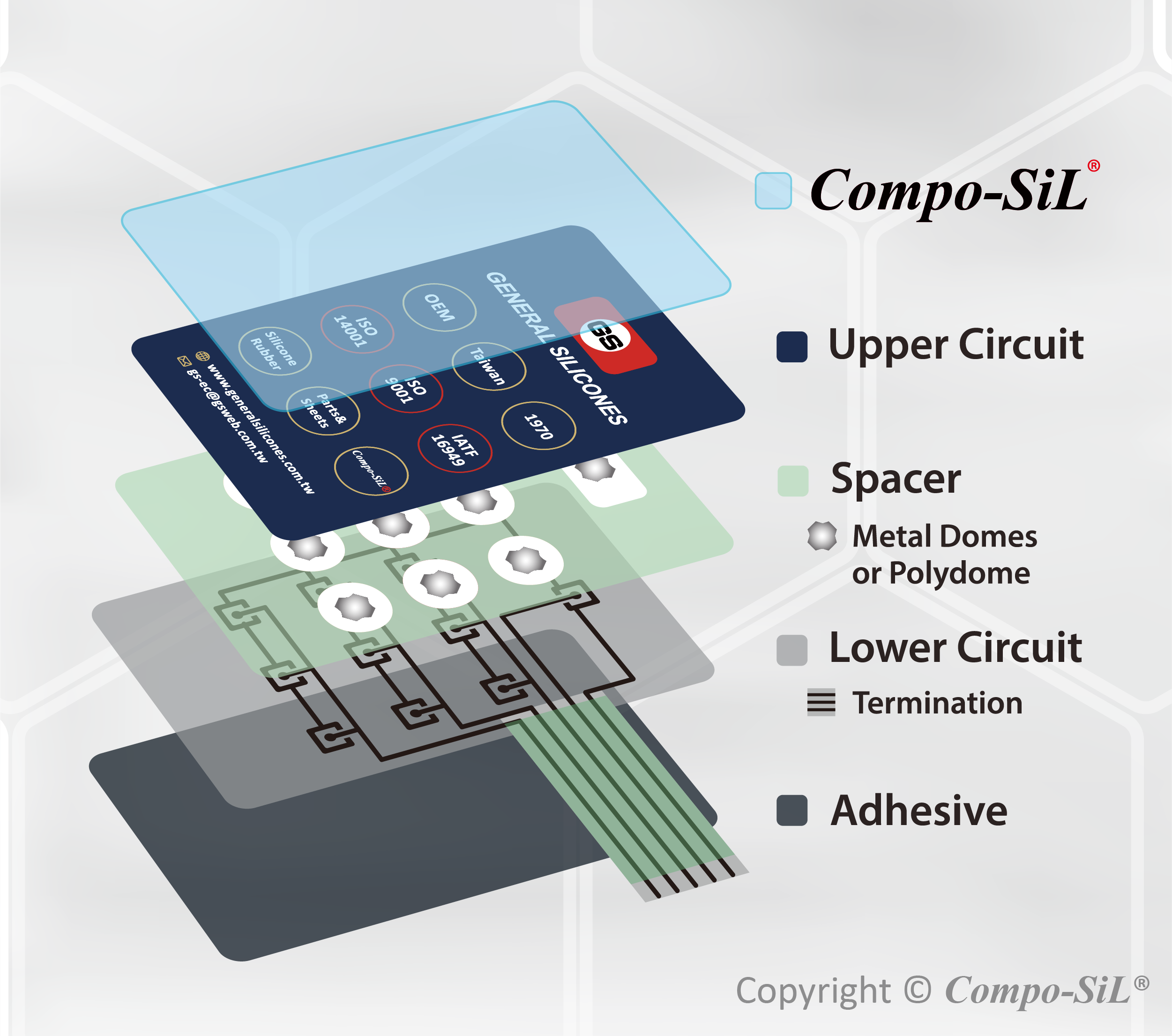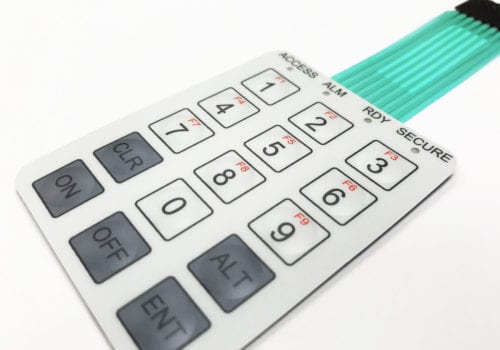How Membrane Switches Are Used in Medical Devices and Equipment
Recognizing the Relevance of Membrane Switches in Customer Interfaces
Membrane buttons are integral elements in the style of reliable user interfaces, assisting in not just capability however additionally improving aesthetic allure and customer interaction. As we check out the future fads and various benefits associated with Membrane technology, it becomes clear that these buttons are more than simply parts; they stand for a convergence of advancement and practicality.
What Are Membrane Switches?

The spacer layer, which has sticky buildings, enables the splitting up of the circuit layer from the overlay, guaranteeing that the switch stays in a non-activated state up until pushed. When stress is used to the overlay, it presses the spacer layer, bridging the void and completing the circuit in the underlying layer. This style not just minimizes the physical area needed for typical mechanical switches however additionally enhances the durability of the tool, as Membrane buttons are usually immune to dust, wetness, and other environmental variables.
Generally discovered in applications varying from customer electronic devices to medical devices, Membrane switches are integral to contemporary technology, offering a efficient and straightforward user interface that lines up with modern design needs.
Benefits of Membrane Buttons
While numerous switch modern technologies exist, Membrane Switches offer unique advantages that make them especially desirable in various applications. One of the primary benefits of Membrane buttons is their small style, which permits space-saving implementations in gadgets where realty is limited. Their thin profile not only boosts aesthetic appeal yet additionally assists in lightweight building.
Another substantial advantage is their resistance to environmental variables. Membrane buttons are commonly secured versus moisture, dirt, and impurities, making them optimal for use popular settings, such as medical tools and commercial devices. This toughness prolongs the life expectancy of the button, minimizing maintenance prices and boosting reliability.
Additionally, Membrane switches can be personalized to meet specific style demands, integrating unique graphics and shades that improve customer interaction. Their tactile responses choices can likewise be customized to provide an enjoyable customer experience. Furthermore, Membrane buttons are cost-effective, especially in high-volume applications, as they can be produced successfully.
Applications in Different Industries

In the consumer electronic devices field, Membrane buttons are common in gadgets such as microwaves, cleaning equipments, and remotes. Their tactile responses and visual choices improve user experience while offering a smooth, modern-day look. Additionally, auto producers make use of Membrane buttons in dashboard controls and infotainment systems, where room is restricted, and individual involvement is vital.
Moreover, the commercial field leverages Membrane buttons in control panels for equipment and devices, permitting user-friendly procedure in frequently severe settings. Their resistance to chemicals and wetness guarantees long life and integrity in these applications. In general, the versatility of Membrane Switches adds significantly to their widespread use, making them crucial in different technical domains.
Style Factors To Consider for Membrane Buttons

When developing Membrane switches, a number of crucial considerations need to be taken into consideration to site link make certain optimum capability and customer experience. The option of materials is crucial; selecting durable, top quality substrates can boost the button's long life and resistance to environmental elements such as moisture and temperature variations.
Second of all, the style of the graphic overlay should focus on quality and simplicity of use. Icons and message need to be readable, and the layout should promote instinctive interaction (membrane switches). Additionally, responsive comments is vital; incorporating a responsive dome or various other mechanisms can boost the individual experience by offering physical verification of activation
One more essential factor is the button's electrical efficiency. Designers must make sure that the conductive traces are correctly designed to lessen resistance and avoid signal disturbance. This includes assessing the needed actuation force and making certain compatibility with the electronic parts have a peek at this website they will user interface with.

Future Fads in Membrane Innovation
As technology continues to breakthrough, Membrane buttons are poised to progress significantly, driven by developments in products and manufacturing methods. One arising fad is the consolidation of sophisticated products, such as adaptable substratums and conductive inks, which enhance toughness and reduce the overall weight of Membrane buttons. These products not just improve the tactile reaction yet additionally allow for the design of switches that can withstand harsher ecological problems.
Furthermore, the assimilation of touch-sensitive technologies is transforming standard Membrane Switches into more interactive individual interfaces. Capacitive touch sensing units installed within Membrane button panels can give a more responsive and intuitive user experience, lining up with the growing demand for smooth, contemporary styles in consumer electronics.
Furthermore, improvements in printing methods, such as electronic and 3D printing, allow fast prototyping and personalization of Membrane switches. This flexibility allows manufacturers to react faster to market needs and customer choices.
Finally, sustainability is ending up being a significant focus, with manufacturers discovering green products and procedures. As these trends unfold, the future of Membrane innovation guarantees enhanced functionality, visual charm, and environmental obligation, solidifying their role in innovative interface across various sectors.
Verdict
Finally, Membrane Switches represent a vital part in the style of interface, incorporating performance with aesthetic adaptability. Their benefits, including resilience and resistance to environmental variables, make them appropriate for diverse applications throughout different industries. Moreover, thoughtful style factors to consider boost user communication and experience. As developments in modern technology continue, the advancement of Membrane buttons is expected to more refine interface, driving development and boosting functionality in a significantly complicated technical landscape.
Membrane buttons are indispensable components in the style of reliable user interfaces, helping with not just functionality but likewise boosting visual appeal and individual communication.Membrane Switches serve as an important part in numerous user interfaces, helping with a seamless communication in between users and electronic gadgets.While numerous switch modern technologies exist, Membrane Switches offer unique advantages that make them especially preferable in various applications.Moreover, Membrane switches can be personalized to satisfy details layout requirements, incorporating distinct graphics and shades that improve individual communication.In conclusion, Membrane Switches represent a crucial part in the design of user interfaces, combining performance with aesthetic versatility.